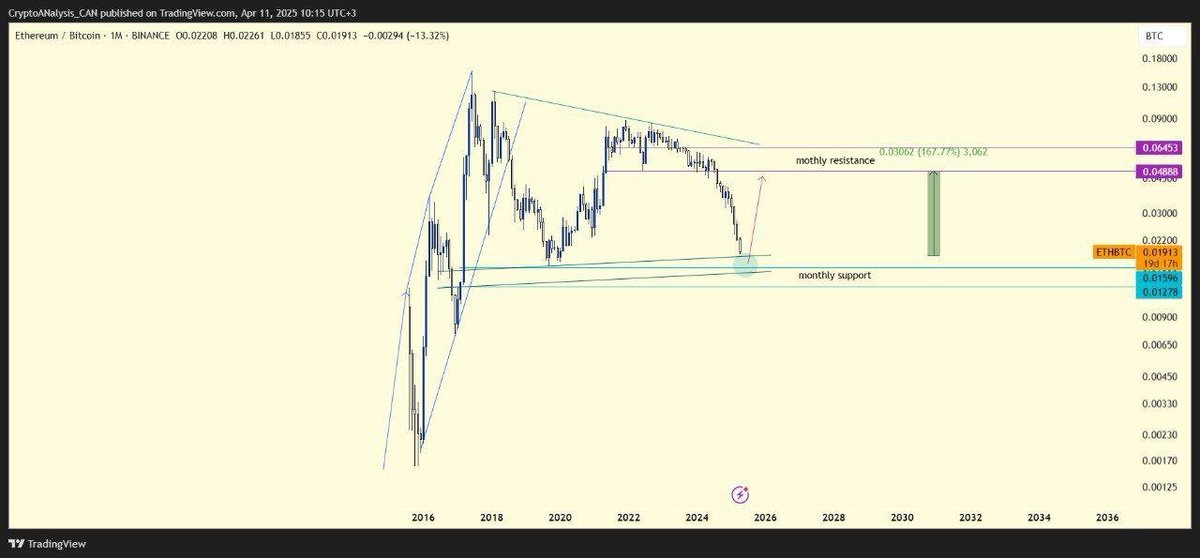Ethereum’s Privacy Puzzle: Unraveling the #ETHBTC & #ETH.D Roadmaps
Introduction
In the ever-evolving cryptocurrency landscape, Ethereum stands tall as the second-largest blockchain by market capitalization. While its transparency is often lauded, it also presents a significant challenge: privacy. Let’s explore Ethereum’s privacy conundrum, delve into the proposed solutions by the #ETHBTC and #ETH.D roadmaps, and analyze their potential impacts.
The Privacy Conundrum
Transparency: A Blessing and a Curse
Blockchains like Ethereum and Bitcoin are open books, allowing anyone to scrutinize transactions. This forced transparency ensures robust security, enables community oversight, and facilitates regulatory compliance. However, it also leads to privacy leaks, where users’ financial habits and transactions can be traced and analyzed [1]. For instance, a simple search on Etherscan can reveal a user’s transaction history, including the amounts involved and the addresses interacted with.
Privacy in DeFi: A Critical Gap
Decentralized Finance (DeFi) applications, built on Ethereum, have revolutionized the financial landscape. Yet, the lack of privacy in these platforms poses significant risks. Users’ transactions can be tracked, potentially leading to financial censorship, where users or entities can be excluded from the network based on their transaction history. Moreover, targeted attacks, such as front-running and sandwich attacks, can exploit this transparency, leading to significant financial losses. Lastly, reputation damage can occur if sensitive transactions are made public, potentially harming users’ personal and professional lives [2].
Ethereum’s Privacy Solutions: #ETHBTC & #ETH.D
#ETHBTC: Leveraging Bitcoin’s Privacy
The #ETHBTC roadmap proposes integrating Bitcoin’s privacy features into the Ethereum ecosystem. By doing so, Ethereum can benefit from Bitcoin’s robust privacy features without compromising its smart contract functionality.
– CoinJoin: This Bitcoin privacy feature allows users to aggregate their transactions with others, making it difficult to trace individual transactions. By implementing CoinJoin, Ethereum users can obfuscate their transaction history, enhancing their privacy.
– Confidential Transactions: This feature enables users to conceal the amounts involved in their transactions. By integrating Confidential Transactions, Ethereum users can prevent value tracking, adding an extra layer of privacy.
#ETH.D: A New Privacy-Focused Chain
The #ETH.D roadmap suggests forking Ethereum to create a new, privacy-centric chain. This approach allows for more radical changes, enabling the integration of advanced privacy features.
– Ring Signatures: This feature allows users to sign transactions on behalf of a group, making it difficult to determine the actual sender. By implementing ring signatures, Ethereum users can hide their identity, enhancing their privacy.
– Stealth Addresses: This feature enables users to generate one-time addresses for receiving transactions. By using stealth addresses, Ethereum users can mask their recipient addresses, further enhancing their privacy.
– ZK-SNARKs: This feature enables private smart contracts and off-chain computations. By integrating ZK-SNARKs, Ethereum users can perform private computations, ensuring that their data remains confidential.
Analysis: Challenges and Opportunities
Challenges
– Compatibility: Integrating privacy features without disrupting Ethereum’s existing ecosystem and dApps is a significant challenge. The Ethereum community must ensure that these changes do not break existing applications or create unnecessary friction for users.
– Regulatory Compliance: Enhanced privacy could potentially hinder regulatory oversight, raising legal and political hurdles. The Ethereum community must engage with regulators to ensure that these privacy features comply with relevant laws and regulations.
– Resource Intensity: Privacy-enhancing technologies often come with increased computational and storage requirements. The Ethereum community must ensure that these changes do not negatively impact the network’s performance or usability.
Opportunities
– User Adoption: Enhanced privacy could attract a broader range of users, including those from traditionally privacy-conscious sectors. By offering robust privacy features, Ethereum can tap into new markets and use cases.
– Regulatory Engagement: Proactive engagement with regulators could help shape a favorable legal landscape for privacy-focused blockchains. By working with regulators, the Ethereum community can ensure that privacy features are developed and implemented responsibly.
– Technological Innovation: The development of privacy features could stimulate further innovation in the Ethereum ecosystem. As the community works to enhance privacy, new use cases and applications may emerge, driving the network’s growth and evolution.
Conclusion: The Path Forward
Privacy: A Necessary Evolution
As Ethereum continues to grow and evolve, so too must its approach to privacy. The #ETHBTC and #ETH.D roadmaps offer promising solutions, each with its unique set of challenges and opportunities. The Ethereum community must engage in open dialogue, fostering a collaborative environment to navigate these complexities and shape a future where privacy and transparency coexist.
In this evolving landscape, it is crucial to remember that privacy is not an absolute but a balance. By striking the right balance between privacy and transparency, Ethereum can continue to thrive as a robust, user-friendly, and privacy-conscious blockchain.
Sources:
[1] Ethereum’s Privacy Problem
[2] Privacy in DeFi: A Critical Gap
Further Reading:
– Ethereum’s Privacy Enhancements
– Bitcoin’s Privacy Features
– ZK-SNARKs Explained





